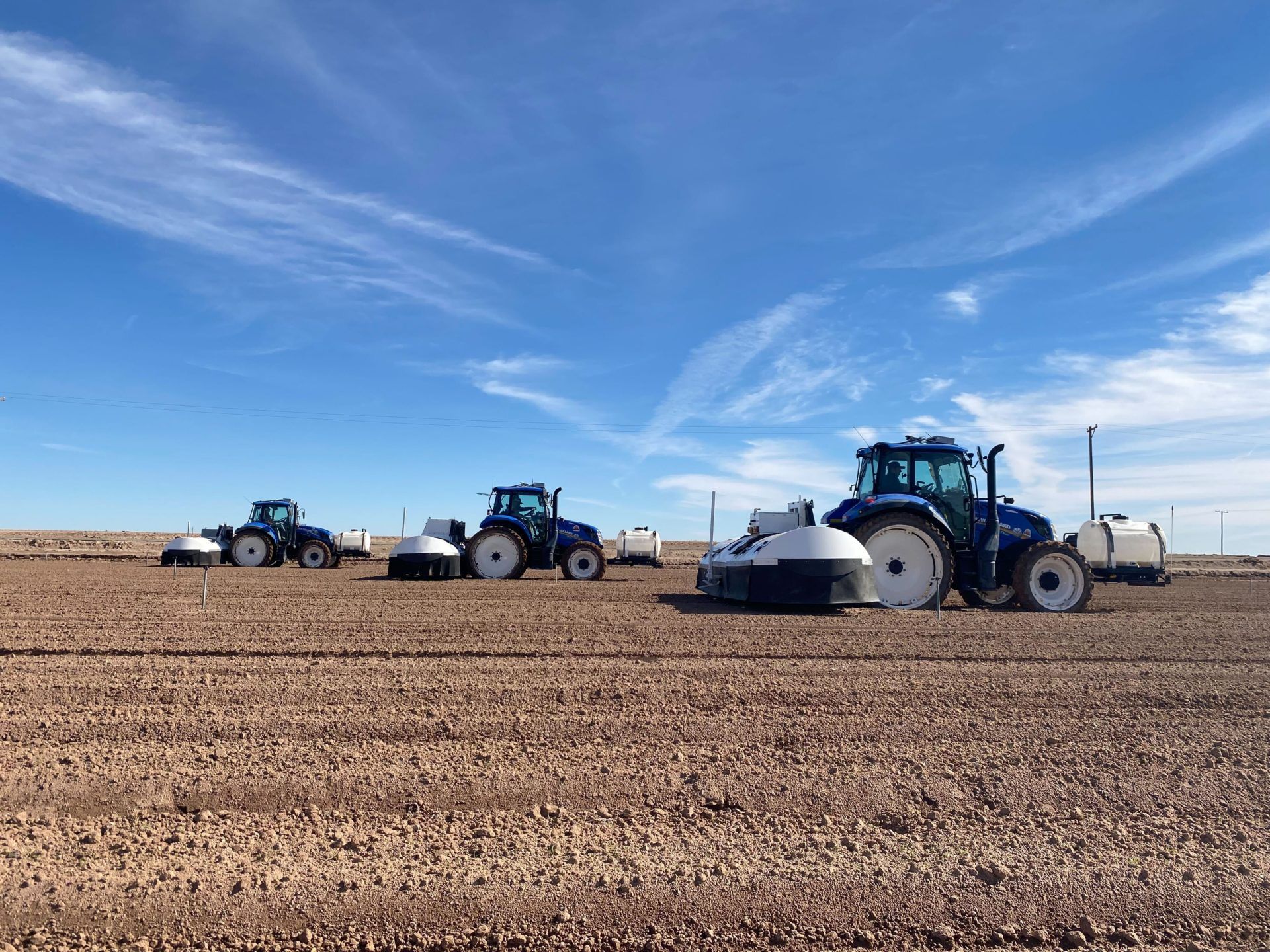- US-based Verdant Robotics has closed a $46.5 million Series A for its “Robotics as a Service” technology that combines crop applications with data analytics for farmers.
- Cleveland Avenue led the round joined by DCVC Bio, Future Ventures and SeaX Ventures.
- Existing investors Autotech Ventures, Cavallo Ventures and AgFunder also participated. [Disclosure: AFN’s parent company is AgFunder.]
- The investment will go towards scaling Verdant’s robot fleet developing the next generation of RaaS products.
On background:
Verdant officially launched its Raas technology in early 2022. At the time, the company said the platform’s “multi-action” capabilities were its biggest differentiator.
- Verdant’s product can spray for weeds, fertilize and treat plants for pests while simultaneously scanning a field and collection data.
- The hardware attaches to the back of a tractor and can cover up to 4.1 acres per hour for precision weeding and spraying.
- To help farmers make faster decisions about spraying and weeding, the system also indexes plants in real time and provides updates via an in-cab interface.
- Verdant currently has RaaS implementations on thousands of acres of specialty crops in the US. “We ought to get to tens of thousands of acres with what we’ve raised now,” founder and CEO Gabe Sibley tells AFN.
- The company is under contract to service about 40% of the US carrot market exclusively for the next five years.
- Verdant’s system also works on plums, cherries, apples and onions, to name a few.
Why it matters:
The farm labor shortage was originally the biggest problem Verdant’s technology addressed. And while Sibley says that’s still the number one pain point for farmers, input costs are high on the list, too.
Input costs skyrocketed in 2022; some predict these high costs will continue into 2023. Technology like Verdant’s — which combines computer vision, GPS navigation and artificial intelligence with soil sciences — can more accurately pinpoint what needs to be treated/sprayed/weeded and when. Farmers use fewer inputs in the process.
However, Sibley says the conversation with growers often shifts rapidly from cost savings to what new things Verdant’s platform can do. For example, farmers can increase yields and understand what’s coming off the field faster.
“Those totally unique things are not about just competing with lower cost, labor or input costs,” he says. “We address the pain points, and then we add new value.
The bigger picture:
Verdant’s tech can also help farmers scale regenerative farming practices, says Sibley.
“Regenerative agriculture” as a buzzword has become more common over the last year. But challenges around wider adoption remain, especially when it comes to assisting farmers with the transition to cover cropping or no-till farming.
“It’s difficult to scale in the same way you can scale mono-cropping,” he says.
The Verdant platform helps because it can tend to plants individually, treat each cubic center of the field independently, and track all progress.
“It allows us to very specifically manage what’s happening and also pay a lot of attention to soil health, soil nutrition, soil sustainability, and all of these things that regenerative ag teaches us,” he says. “The technology actually unlocks a lot of those healthy, older farming practices that maybe we haven’t been doing for a long time.”
On raising in a downturn:
As Series A rounds go, $46.5 million is high, and Verdant says its raise is one of the largest in ag robotics to date.
“We feel very fortunate to work with the investors that we do work with. They see the future and they want to see it happen faster,” says Sibley.
While acknowledging his company just bagged a massive round in the middle of a downturn, he adds that “there’s just genuine value here and people want to participate in that.”
“We feel like it’s really just early days [for] the types of value that computational agronomy is going to add. It is like many other disciplines where computation transformed the industry. It’s going to happen again in outdoor agriculture.”
Verdant will put the bulk of its Series A towards expanding its fleet and further developing its RaaS technology. For now, the company will stick to speciality crops. Without elaborating, Sibley notes that conversations around using Verdant for broad acre crops are increasing.




